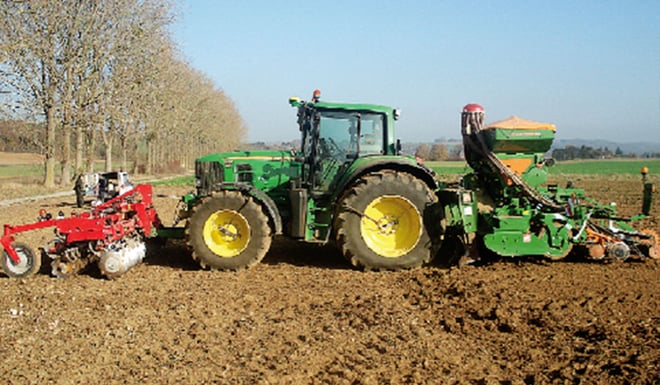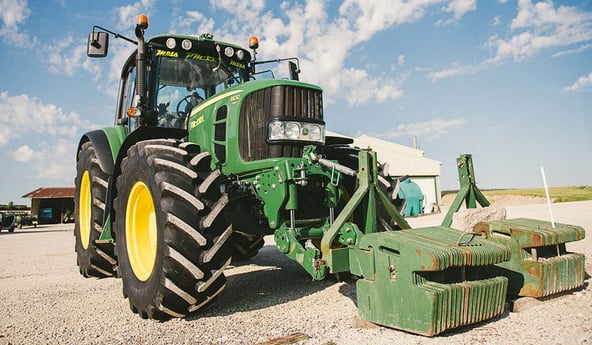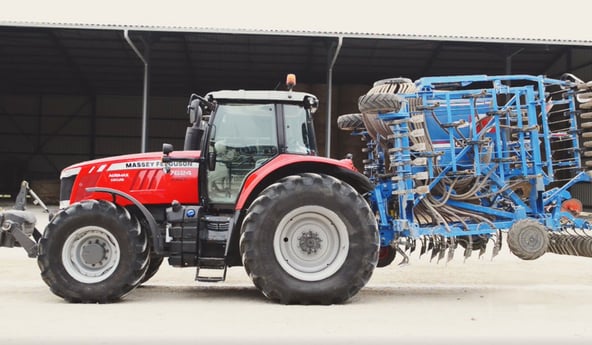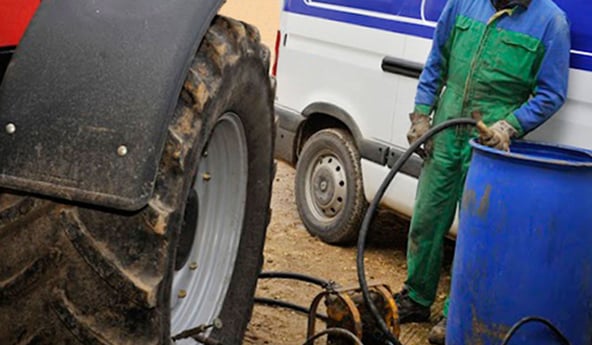Good distribution of weight on your tractor wheels is essential for your safety and the stability of your machinery, but also for good motricity, and to protect your equipment and your soil.
The weight carried by your tyres is directly linked to the quantity of air contained in each of them, the more air in the tyre, the easier it is for them to carry a heavy load. There are two means of increasing the quantity of air in each tyre and therefore the tolerable load:
TWO MEANS OF INCREASING THE TOLERABLE LOAD OF YOUR AGRICULTURAL TYRES
- 1. By forcing more compressible air into the tyre to increase the pressure.
- 2. By increasing the tyre volume to allow more air into the tyre.
Pressure
Beware of increased tyre pressure
On loose soil, higher pressure increases soil compaction, increases the slip ratio, encourages the occurrence of ruts in which the plants will not develop correctly and increases the rolling resistance.
Therefore, increasing the pressure is harmful to plant development and reduces the mechanical yield. It is preferable to choose low pressure tyres; wide VF tyres, which will allow you to increase the load without increasing the pressure, thus preserving the soil.
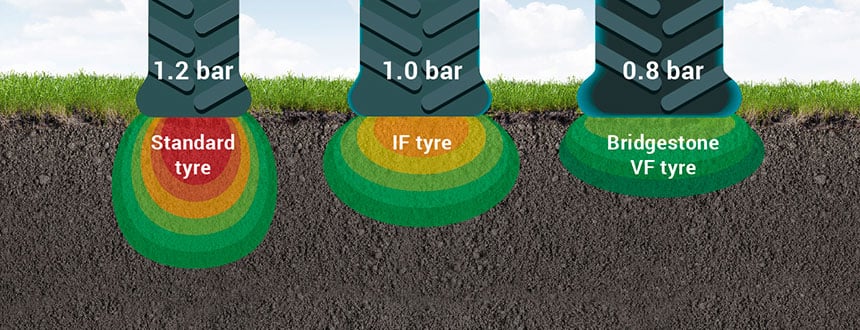
Size
Increase the size of your agricultural tyres
The tractor’s original mount is rarely the most adapted to your requirements or to your machine, it’s just that it was the least expensive for the manufacturer. You probably know that by increasing the size of your wheels and your tractor tyres, you will improve their performance: the tyre will squash the soil less as its contact surface is greater, you will reduce spin for the same reason, and therefore you will also reduce your fuel consumption but most importantly, you can carry a heavier load as the volume of air contained in a tyre is proportional to the load that it carries, which enables you to greatly increase the weight by increasing the global dimensions.
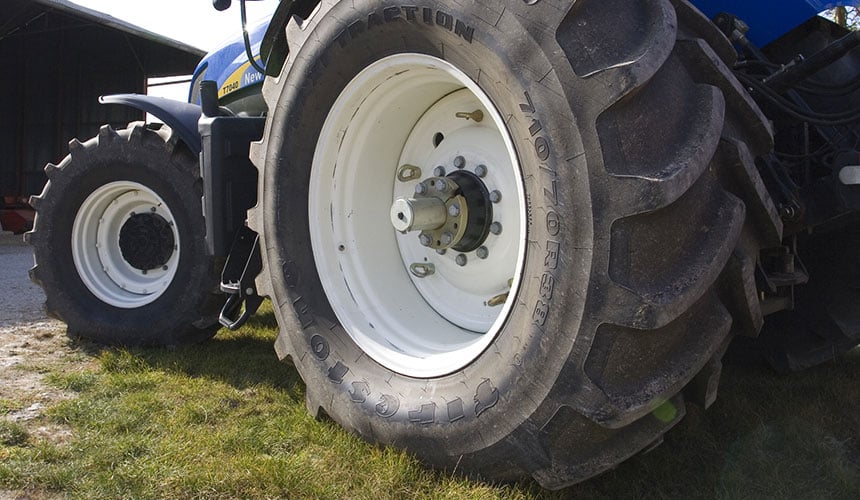
Distribution
Distribution for tractors with two driving wheels
A minimum of 20% of the total tractor weight must be on the front axle, this distribution is obligatory to comply with safety standards and to guarantee the efficiency of the guiding axle.
In use, the weight of mounted equipment or the tractive force require the use of additional weights attached to the front to achieve the 20% of weight on the front of the tractor whatever the circumstances.
Distribution for tractors with four driving wheels
On a tractor with four unequal driving wheels, the distribution of weight must follow these calculations: 40% on the front and 60% on the back. To guarantee the correct distribution, take into consideration the tool which generates the high load transfer to the rear axle and offset this with additional weights at the front to stabilise the equipment.
Be careful not to overload the whole machine as this would have a negative effect on fuel consumption and take care not to overload the front as this would generate excessive wear to the front tyres and, in extreme cases, damage to the front axle.
To learn more about ways to increase your farm’s productivity, bridgestone-agriculture has created a comprehensive eBook on the topic which is available for you to download for free:
Bridgestone-agriculture Blog is written and administered by tractor tyre experts who are available to provide you with advice on agricultural tyres. They will help you to maximise your productivity with information on all things relating to tyres: inexpensive tractor tyres, technical data for agricultural tyres, solutions for avoiding soil compaction, sprayer tyre pressure, why and how to ballast your tractor tyres, when to use dual-wheels, the mechanical causes for abnormal wear, discounted agricultural tyres, etc.
Most people who read this article have also read some of the following articles:
- 7 keys to know the impact of ballast on agricultural tyres
- How and why to ballast your tractor tyres or agricultural tyres
- What are the consequences of excessive weight on my tractor tyres?
- Distribution of weight: ballast with liquid in the tyres or cast iron weights
- What are the disadvantages of using water ballast in tractor tyres?
- Incorrect ballasting: what are the risks for my tractor tyres
This information is intended only to make you aware of the technical and functional aspects of agricultural tires and their use. It does not allow you to make a judgment or a definitive conclusion on a given problem. Only your agricultural tire expert is able to make a technical assessment and take a final decision, case by case.
Leave a
commentary
Your email address will not be published.
Required fields are indicated with *


